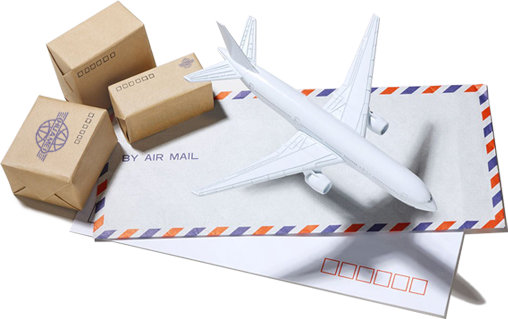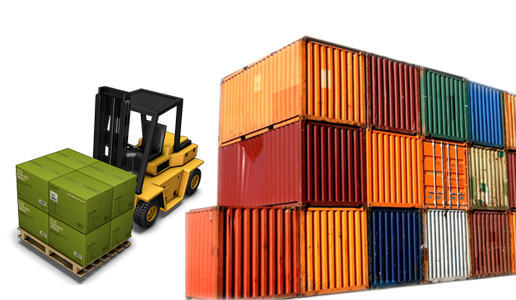Shenzhen Guangzhou to Gambia Angola framework cabinet large equipment oversized shipping customs declaration clearance loading and unloading transportation
Preface: We provide professional frame container shipping services from Shenzhen and Guangzhou to Gambia and Angola, suitable for large equipment and oversized cargo. The entire process includes customs declaration, clearance, loading and unloading, and door-to-door transportation, ensuring the safe and timely delivery of your goods. With our extensive operational experience, we help you easily cope with international logistics challenges and safeguard the development of your business.
In today's rapidly globalizing economy, international transportation of large equipment has become a critical link for businesses to expand their markets. We are pleased to introduce our framework container shipping service from Shenzhen and Guangzhou to The Gambia and Angola, specifically designed to provide comprehensive support for the export of large equipment and oversized cargo. No matter how massive your cargo may be, our professional team will ensure safe, efficient, and seamless transportation through precise customs declaration, clearance, loading/unloading, and transportation operations every time.
Framed Cabinet Shipping Prices and Lead Times to Gambia and Angola:
The price and lead time for shipping framework cabinets to Gambia and Angola by sea are influenced by various factors, including the size, weight, transportation route, choice of shipping company, fuel surcharges, exchange rate fluctuations, etc. To provide a rough reference, here is some common information:
Frame Cabinet Shipping Price to Gambia and Angola by Sea:
Framed containers (such as frame containers, open top containers): Generally more expensive than standard containers because they require special equipment and operations.
Starting price: From China to Gambia or Angola, the shipping cost for a framed container may range from $5,000 to $10,000 per container, with the exact price needing to be quoted based on specific circumstances.
Additional charges: This includes the Bunker Adjustment Factor (BAF), Currency Adjustment Factor (CAF), port congestion fees, etc. These charges may vary.
Shipping frame cabinets to Gambia and Angola by sea:
Shipping time: From major ports in China (such as Shenzhen and Guangzhou) to the main port of Banjul in Gambia or the main port of Luanda in Angola, it usually takes about 35 to 50 days.
Transit Time: If there is a transshipment port, such as Singapore, Panama, etc., the transit time may add an extra 5 to 10 days.
Factors influencing shipping:
- Route selection: Direct routes are usually faster and more reliable than transshipment.
- Seasonal impact: Peak seasons (such as the beginning of each year) may result in longer wait times and higher freight costs.
- Port conditions: The loading and unloading capacity at the destination port and local regulations can also affect overall delivery time and additional fees.
The above information is for reference only. Actual prices and delivery times may vary. For accurate quotes and delivery times, we recommend contacting our customer service team directly. They can provide customized quotes and transportation solutions based on your specific needs (such as cargo size, weight, departure port, destination port, etc.).
The customs clearance documents and procedures for exporting frame cabinets by sea are relatively complex, involving multiple stages. Ensuring that all necessary documents are complete and that the process runs smoothly is crucial for the successful export of goods. Here is an overview of common customs clearance documents and procedures:
Documents required for customs clearance:
Commercial Invoice
- Detailed listing of goods' names, quantities, unit prices, total price, origin, etc.
- The invoice must match the actual goods and be signed or stamped by the exporter.
Packing List
- Detailed packaging information of the goods, including the number, weight, and volume of items in each package.
- The packing list should correspond with the actual shipment and align with the commercial invoice.
Contract or Order
- A contract or order signed by both buyer and seller, serving as proof of trade.
- The contract should clearly specify details of the goods, delivery terms, payment methods, etc.
Bill of Lading
- A transport contract and receipt issued by the carrier, acting as a document of title.
- The bill of lading should indicate the shipper, consignee, destination port, description of goods, etc.
Certificate of Origin: A document proving the country of origin of goods, which may qualify for tariff preferences. Depending on the destination country and trade agreements, specific formats such as FORM A or CO may be required.
Export License: Some countries or specific goods may require an export license, with requirements determined by the destination country and nature of the goods.
Inspection and Quarantine Certificate: Certain countries or goods may require an inspection and quarantine certificate to prove compliance with relevant standards.
Insurance Policy: If cargo transportation insurance is purchased, an insurance document must be provided to ensure the safety of the goods during transit.
Documents Related to Frame Containers: Depending on the type of frame container (such as open-top, flatrack, or frame), additional documents like over-dimensional proof and cargo securing plans may be needed.
Customs clearance processes:
Booking and loading containers:
- Select an appropriate shipping company and voyage, book space, and arrange for container loading.
- Ensure that the loading method for frame containers complies with transportation requirements, especially for oversized and overweight goods.
Customs clearance preparation:
- Prepare all necessary documents, ensuring their authenticity and completeness.
- Submit an export customs declaration to the customs authority, including commercial invoices, packing lists, contracts, certificates of origin, etc.
Customs inspection:
- Customs may inspect the goods, including document review and physical inspection of the cargo.
- If an inspection is required, cooperate with customs to complete the inspection procedures.
Release and shipment:
- After customs release, the goods can be loaded onto the ship for transport.
- Obtain the ocean bill of lading and ensure the accuracy of the bill of lading information.
Destination port customs clearance:
- Before arriving at the destination port, the consignee or their agent must prepare the necessary customs clearance documents for the destination port.
- Documents include commercial invoices, packing lists, ocean bills of lading, certificates of origin, etc.
- The destination port customs may conduct inspections to ensure that the goods match the declarations.
Release and delivery:
- After customs release at the destination port, the goods can be delivered to the consignee.
- Arrange inland transportation and delivery to ensure timely arrival of the goods at the final destination.
Marine export involving frame containers includes multiple stages and specific document preparations. It is crucial to ensure the accuracy and completeness of all documents to guarantee smooth clearance. For any questions, it is recommended to consult our customer service or customs clearance team for assistance tailored to your specific situation.
Packaging Requirements for Frame Cabinets Export by Sea:
The export of frame cabinets by sea involves transporting oversized and overweight items, so the packaging requirements are very strict to ensure the safety and integrity of the goods during transportation. Here is a detailed explanation of the packaging requirements for exporting frame cabinets by sea:
Basic rules for packaging:
Safety and Stability
- The packaging must withstand various risks during sea transport, including rough seas, temperature changes, humidity effects, and impacts and compression during loading and unloading.
- Ensure that the goods are securely fixed within the container and will not be damaged due to movement during transportation.
Waterproof and Moisture-proof
- Sea transport may encounter bad weather; the packaging must have waterproof and moisture-proof functions to protect the goods from water stains and moisture damage.
- Use moisture-proof materials (such as moisture barriers, desiccants) for additional protection of moisture-sensitive goods.
Shockproof and Impact-resistant
- During frame cabinet transport, goods may undergo multiple loading and unloading processes; the packaging needs shockproof and impact-resistant features to reduce vibration and impact on the goods during transportation.
- Wrap and secure the goods with cushioning materials (such as foam, bubble wrap, wood shavings, etc.).
Clear Labeling
- The packaging must clearly indicate the name, quantity, weight, volume, sender and recipient information, destination, etc., of the goods.
- Use internationally recognized labels and symbols to ensure that dockworkers can correctly identify and handle the goods.
Packaging requirements for different types of goods
Machinery Equipment
- Outer Packaging: Use sturdy wooden crates or iron boxes to ensure the box structure is robust and can withstand pressure and impact during transportation.
- Internal Fixation: Secure the equipment inside the box with wooden frames, pallets, or metal brackets to prevent movement during transportation.
- Shock Absorption Materials: Fill the space between the equipment and the packaging box with cushioning materials such as foam or bubble wrap to reduce vibrations during transportation.
Heavy Equipment
- Base Design: Design a special base or support for heavy equipment to ensure stability and reliability during transportation.
- Securing Devices: Use steel cables, nylon straps, or metal brackets to firmly secure the equipment within the frame cabinet, preventing sliding or tipping during transportation.
- Shock Absorption Measures: Place shock-absorbing pads or rubber pads between the base and the equipment to minimize the impact of vibrations on the equipment.
Oversized Equipment
- Open-top or Frame Cabinets: Oversized equipment is typically transported using open-top or frame cabinets, with packaging ensuring safe loading, unloading, and transportation.
- Windproof Securing: When transporting in an open-top cabinet, cover the equipment with canvas or windproof material and secure it tightly with ropes to prevent the effects of sea winds.
-Special Brackets: Design special brackets and securing devices for ultra-wide or ultra-high equipment to ensure stability and reliability during transportation.
Electronic Equipment
- Anti-static Materials: Wrap electronic equipment with anti-static packaging materials to prevent damage from static electricity.
-Waterproof and Moisture-proof: Treat electronic equipment for water and moisture resistance, wrapping them in moisture-proof bags or films.
-Internal Fixation: Fill the interior of the packaging box with sponge or foam materials to ensure the stability of the equipment during transportation.
Selection for packaging materials:
Wooden packaging materials
Advantages: Strong and durable, suitable for packaging heavy and oversized equipment.
Precautions: Ensure the wood has been fumigated and meets ISPM-15 standards (International Plant Protection Convention) to prevent the spread of pests.
Metallic packaging materials
Advantages: High strength, suitable for packaging heavy machinery.
Precautions: Metal packaging should be designed with proper ventilation and waterproof structures to prevent internal rusting.
Plastic packaging materials
Advantages: Lightweight and waterproof, suitable for packaging electronic products and fragile goods.
Precautions: Ensure the plastic material complies with environmental standards and avoid using harmful substances.
Buffering materials
Options: Foam, bubble wrap, wood shavings, cardboard, etc., choose appropriate buffering materials based on the characteristics of the goods.
Precautions: Buffering materials should be thick enough to effectively absorb shocks and vibrations during transportation.
Packaging inspection and examination:
Internal Inspection
- Before loading the goods into the box, check if the internal packaging is intact, if there is sufficient cushioning material, and if the equipment is securely fixed.
External Inspection
- Check if the external packaging box is undamaged, if the labels are clear, and if waterproof and moisture-proof measures are in place.
Reinforcement and Sealing
- After packing, reinforce the packaging box with steel straps, plastic bands, or ropes to ensure it does not loosen or break during transportation.
- Seal the box body with waterproof tape or sealing tape to prevent water from entering.
Photographing and Recording
- Take photos of the goods before and after packing to keep images of the packaging status, which can serve as evidence in case of issues.
The packaging requirements for exporting frame cabinets by sea are strict, involving various factors and technologies to ensure the goods safely reach their destination in complex transportation environments. By following the above packaging principles and requirements and choosing suitable packaging materials and methods, you can effectively reduce transportation risks and protect the integrity and safety of the goods. For more detailed packaging consultation or services, please contact our customer service team at any time, and we will provide you with professional packaging solutions and technical support.
Insurance purchasing for frame cabinets export by sea:
Insurance for exporting frame cabinets by sea is crucial to ensure their safety and reduce risks during transit.
Because of frame cabinets mostly involve in oversized and overweight goods, there's a high risk in transit, thus, an appropriate insurance is crucial. Here are comprehensive guidelines for purchasing insurance for sea exports.
Insurance type:
1. Comprehensive Insurance
- Coverage: Comprehensive insurance typically covers almost all possible risks, including maritime risks (such as shipwrecks, collisions, fires, sinkings, etc.), accidental incidents (such as damage during loading and unloading), as well as theft and loss.
- Applicable Scenarios: Suitable for high-value goods with significant transportation risks, especially oversized and overweight equipment in frame containers.
2. Water Damage Insurance
- Coverage: Covers losses due to maritime risks (such as shipwrecks, sinkings, fires) and accidents, but does not cover general wear and tear or minor damages.
- Applicable Scenarios: Suitable for marine cargo insurance of general goods, but it is usually recommended to choose comprehensive insurance for more comprehensive coverage when transporting in frame containers.
3. War Insurance
- Coverage: Covers losses caused by war, hostile actions, piracy, and other special risks.
- Applicable Scenarios: Suitable for transportation in areas with potential war risks or instability.
4. Additional Insurance
- Coverage: Extra coverage chosen based on specific needs, such as strike insurance, general average insurance, and non-delivery insurance.
- Applicable Scenarios: Selected based on the special requirements of the goods or the special risks of the transportation route.
Processes for purchasing insurance:
Evaluate the value of the goods
- Determine the actual value of the goods (including cost, freight, and insurance) since the insurance amount must cover all these expenses.
Choose an insurance company
- Select a reputable insurance company with extensive experience, especially those with a global service network and expertise in handling containerized cargo insurance.
Provide necessary information
- Provide detailed information about the goods to the insurance company, including the item name, quantity, weight, dimensions, destination, and mode of transport.
- Supply commercial invoices, packing lists, bills of lading, and other relevant documents to enable the insurer to assess risk and calculate premiums.
Determine insurance terms
- Negotiate and agree on insurance terms with the insurance company, including the type of insurance, coverage scope, deductible (if applicable), and insurance amount.
Pay the premium
- Pay the premium based on the insurer's quote, which is typically calculated based on the value of the goods and the chosen type of insurance.
Obtain the policy
- After paying the premium, the insurance company will provide formal policy documents (Insurance Policy) to ensure that the policy information is accurate.
Notes:
Insurance Amount
Ensure that the insurance amount is sufficient to cover the actual value of the goods to avoid losses due to underinsurance.
Deductible
Understand the deductible provisions in the insurance policy and choose an appropriate deductible to reduce premiums.
Special Clauses
If the goods are transported in frame cabinets, confirm whether the insurance policy covers special risks associated with such transportation, such as excessive height, width, or weight.
Immediate Reporting
In case of loss during transportation, report it immediately to the insurance company and provide detailed loss documents and proof materials.
Claim Process
Familiarize yourself with the insurance company's claim process, including time limits for claims and required documents, to ensure timely and smooth claims in case of loss.
Purchasing marine export insurance for frame cabinet shipments is a crucial risk management measure to ensure the safety of goods during transportation. By selecting appropriate insurance types, communicating thoroughly with the insurance company, and following the correct purchasing procedures, you can effectively reduce transportation risks and ensure the safe arrival of goods at their destination. For more detailed insurance advice or assistance, please contact our customer service team, and we will provide professional insurance services and solutions.
Contents of framework cabinet ocean freight export service
We offer services for the sea export of oversized large equipment frames, including warehousing, loading and unloading, securing, reinforcement, consolidation, trucking, transshipment, document preparation, customs clearance at the departure station, border transfer, and planning applications, as well as road-to-rail intermodal transport services at various railway ports and accurate cargo tracking services.
Choose our services, and you will enjoy the convenience of door-to-door delivery, with every step from initial customs clearance to final delivery meticulously managed by our experienced expert team. We understand that each piece of equipment carries your trust and expectations, so we will go all out to ensure your goods arrive smoothly and on time at their destination. Let's embark together on this worry-free logistics journey.











